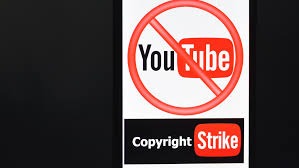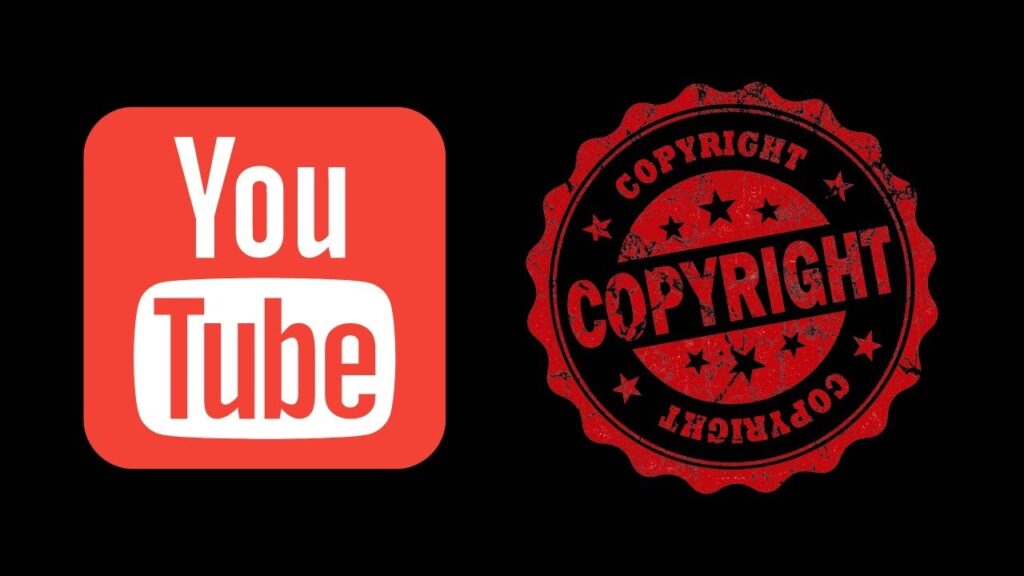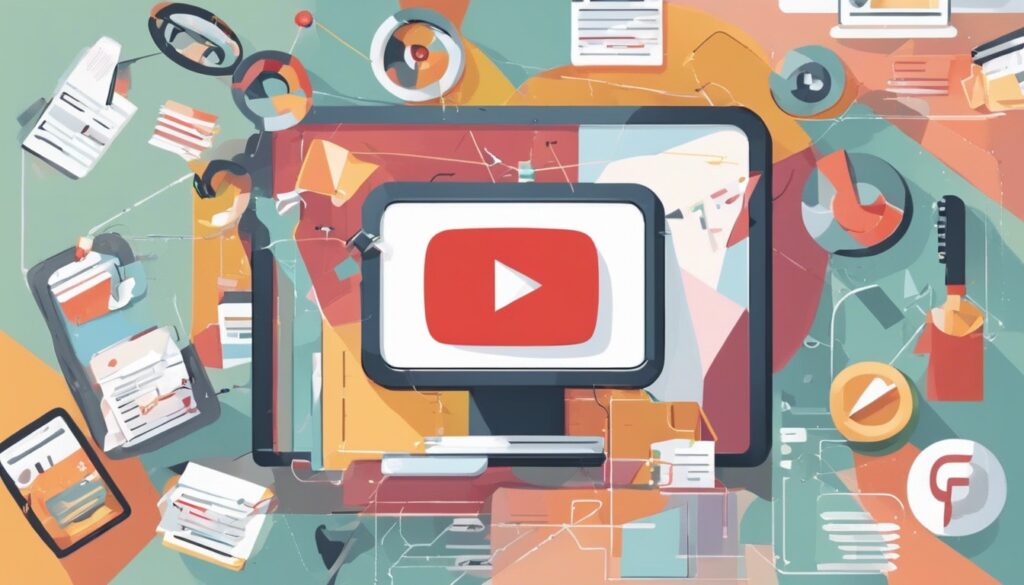As a YouTube creator, navigating the complex world of copyright rules is important to avoid potential legal issues. YouTube’s copyright policies aim to strike a balance between protecting creators’ freedom of expression and respecting intellectual property rights. At its core, the platform’s guidelines state that you should only upload content you’ve created or have permission to use, avoiding unauthorized use of copyrighted material like music, videos, or snippets from other works.
In this article, we’ll explore YouTube’s rights management system, common copyright issues faced by creators, and strategies to obtain necessary permissions or leverage fair use principles for content repurposing. By understanding these principles, you can create compelling content while ensuring compliance with copyright laws and YouTube’s policies.
Understanding YouTube Copyright
As YouTube creators, you must understand copyright so you can ensure compliance with laws and platform policies. Let’s delve into the fundamental concepts:
Definition of Copyright
A copyright is an intellectual property right that protects creators of original content, work, or authorship. This includes songs, music, images, or artwork. If you created or purchased the content, the copyright belongs to you. However, if someone else created or purchased the content, the copyright belongs to them. Copyrights are immediate upon the creation of original content, and they can also be purchased. Currently, there isn’t a copyright renewal process, meaning the copyright stays active as long as the creator is living—and even longer in some cases.
General Principles of Copyright
Creators should only upload videos that they have made or that they’re authorized to use. This means they should not upload videos they didn’t make or use content in their videos that someone else owns the copyright to, such as music tracks, snippets of copyrighted programs, or videos made by other users, without necessary authorizations. A copyright holder has the exclusive right to determine under what conditions the copyrighted material may be used or shared by others.
YouTube copyright infringement, also known as a copyright violation, occurs when you use copyrighted material that does not belong to you and does not legally fall under any copyright use provisions, which we will discuss further in the upcoming sections.
YouTube’s Rights Management Policy
YouTube has implemented a robust rights management policy to protect copyrighted content on its platform. The cornerstone of this policy is the Content ID system, which is designed to help copyright owners easily identify and manage their copyrighted material on YouTube.
Content ID System
Content ID is an automated system that uses digital fingerprinting technology to identify copyrighted content uploaded to YouTube. Copyright owners can submit reference files containing their copyrighted works to YouTube’s database. When a user uploads a video, Content ID scans it against this database and detects any matches with the registered copyrighted material.
If a match is found, Content ID allows copyright owners to take one of the following actions based on their predefined rules and policies:
- Block the video: The entire video is blocked from being viewed on YouTube.
- Monetize the video: Ads are displayed on the video, and the revenue generated is shared with the uploader or claimed entirely by the copyright owner.
- Track viewership statistics: The copyright owner can monitor the video’s viewership data without monetizing or blocking it.
The Content ID system streamlines the process for copyright owners, eliminating the need to submit individual copyright takedown notices for each infringing video. Instead, they can manage their copyrighted content at scale through automated detection and enforcement.
Roles and Responsibilities
YouTube sets explicit guidelines on how Content ID can be used, and monitors its usage and disputes on an ongoing basis to ensure compliance with these guidelines. Copyright owners who repeatedly make erroneous Content ID claims or misuse the system can have their access revoked and their partnership with YouTube terminated.
To be eligible for Content ID, copyright owners must meet specific criteria set by YouTube. They must own exclusive rights to a substantial body of original material that is frequently uploaded by YouTube users. This requirement helps ensure that Content ID is used responsibly and effectively by legitimate rights holders.
Content ID is a powerful tool that enables copyright owners to protect their intellectual property while providing options for monetization or tracking. By automating the process of identifying and managing copyrighted content, YouTube aims to strike a balance between respecting copyright laws and fostering a vibrant creator community.

Common Copyright Issues on YouTube
Examples of Copyright Violations
As creators, we must be vigilant about potential copyright violations when producing content for YouTube. Some common examples of copyright infringement include:
- Unauthorized Use of Music: Incorporating copyrighted music tracks, audio clips, or background music in videos without obtaining proper licenses or permissions from the copyright holders is a violation.
- Repurposing Copyrighted Videos: Uploading or using substantial portions of videos created by others, such as movie clips, TV show excerpts, or other creators’ content, without authorization is considered infringement.
- Reproducing Copyrighted Images or Artwork: Using copyrighted images, photographs, or artwork in videos without permission from the copyright owners can lead to copyright claims.
- Reproducing Copyrighted Text or Literature: Reciting or displaying substantial portions of copyrighted text, books, or literary works without permission may constitute a violation.
It’s important to note that even if the copyrighted material is used for non-commercial purposes or with attribution, it does not automatically grant the right to use it without permission from the copyright holder.
Consequences of Copyright Infringement
Failure to comply with copyright laws and YouTube’s policies can result in serious consequences for creators. These may include:
- Content Removal: YouTube may remove or block videos that contain copyrighted material, effectively taking down the infringing content from the platform.
- Copyright Strikes: If a copyright owner submits a valid Digital Millennium Copyright Act (DMCA) complaint, YouTube may issue a copyright strike against the uploader’s account. Three copyright strikes within a 90-day period can lead to account termination.
- Monetization Suspension: YouTube may suspend or revoke the ability to monetize videos if there are repeated copyright infringement issues.
- Legal Consequences: In severe cases, copyright holders may pursue legal action against infringers, potentially resulting in fines, damages, or even criminal charges, depending on the jurisdiction and the severity of the infringement.
To avoid these consequences, it is crucial for creators to respect intellectual property rights and ensure they have the necessary permissions or licenses before using copyrighted material in their videos. Alternatively, creators can leverage fair use exceptions or utilize royalty-free or public domain resources to minimize the risk of copyright infringement.

Fair Use and Its Application
What is Fair Use?
Fair use is a legal doctrine that allows the use of copyrighted material without permission from the copyright holder under certain circumstances. It serves as an exception to copyright law, enabling the reuse of protected works for purposes such as commentary, criticism, research, teaching, or news reporting.
In the United States, judges decide what constitutes fair use by considering four factors on a case-by-case basis:
- The purpose and character of the use: Courts typically focus on whether the use is “transformative,” meaning it adds new expression or meaning to the original work, or merely copies it. Commercial uses are generally less likely to be considered fair use, although it’s still possible to monetize a video containing fair use material.
- The nature of the copyrighted work: Using material from primarily factual works is more likely to be considered fair use than using purely fictional works.
- The amount and substantiality of the portion used: Borrowing small portions from an original work is more likely to be considered fair use than using large portions. However, even a small amount may weigh against fair use if it’s considered the “heart” of the work.
- The effect on the potential market for the copyrighted work: Uses that harm the copyright holder’s ability to profit from their original work are less likely to be considered fair use, although courts have sometimes made exceptions for parodies.
It’s important to note that fair use is a subjective and context-dependent doctrine, and there are no definitive rules or fixed durations that automatically qualify as fair use.
How Fair Use Works on YouTube
YouTube’s Content ID system is an automated tool that identifies copyrighted material uploaded to the platform. When a match is found, it allows copyright owners to take actions such as blocking, monetizing, or tracking the video. However, Content ID cannot determine fair use, as it’s a subjective decision that can only be made by courts.
If you believe your video falls under fair use, you can defend your position through YouTube’s Content ID dispute process. This involves challenging the copyright claim and potentially going through the appeal and DMCA counter-notification process, which forces the claimant to withdraw or file a lawsuit.
It’s crucial to understand that pursuing a fair use defense should not be taken lightly and may require legal advice. YouTube cannot arbitrate fair use disputes or mediate copyright claims, as the platform’s role is to empower creators to remove or swap out claimed content if they feel it doesn’t add significant value to their video.
To minimize the risk of copyright infringement, it’s recommended to avoid using copyrighted material unless it’s essential to your video. You can explore the YouTube Audio Library for copyright-safe music tracks or carefully review the terms and conditions of other royalty-free or licensing sites before using their content on YouTube.
Conclusion
In navigating the complex landscape of YouTube copyright rules, creators must strike a delicate balance between creative expression and respect for intellectual property rights. By thoroughly understanding the principles of copyright, YouTube’s rights management system, and the fair use doctrine, creators can minimize the risk of infringement while producing compelling content. Recognizing common pitfalls, such as unauthorized use of music, videos, or images, is crucial to avoid potential consequences like content removal, monetization suspension, or legal liabilities.






